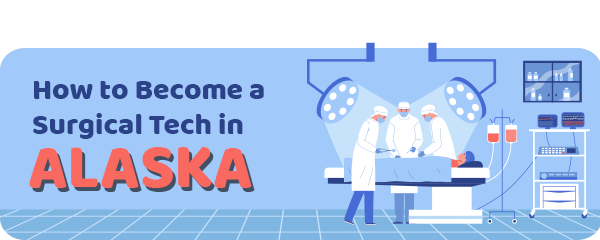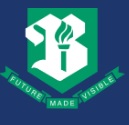The surgical facility in Alaska is equipped with a team of skilled personnel ready to respond swiftly, particularly in emergency situations.
This group of professionals includes:
- Surgeons
- Anesthesia specialists
- Surgical nurses
- Surgical technicians
Their collaboration commences prior to the commencement of the surgical procedure and continues until its completion.
These individuals may also be referred to as operating room (OR) technicians or scrub technicians.
Article Table of Contents
Job Description and Responsibilities of Surgical Technologists
Surgical technologists are responsible for a variety of tasks during their work shifts, which encompass:
- Preparing patients for surgery
- Transporting patients to and from the operating room
- Setting up the operating room with surgical equipment and supplies
- Monitoring instrument counts throughout the surgery
- Providing surgeons with medical instruments
- Assisting in wound closure and patient bandaging
It’s essential to note that these responsibilities are not an exhaustive list of a surgical technologist’s duties.
Training and Education for Surgical Technologists in Alaska
Surgical technologists in Alaska are not regulated by any specific institution; instead, they fall under the purview of their employers.
However, this doesn’t imply an easy path to this profession.
Here’s an overview of the process:
- Begin by obtaining a high school diploma or a GED.
- Enroll in a specialized training program designed for surgical technology.
- These programs typically require a combination of classroom education and clinical training.
In Alaska, there are a few admission requirements common to all training schools:
- Completed application
- Copy of diploma or GED
- Transcripts
- Essay
- Background check form
- TB test form
- Application fee
Several institutions in Alaska offer such training.
Their enrollment requirements may vary slightly, but many of them share common prerequisites, including coursework in:
- Microbiology
- Pathophysiology
- Pharmacology
- Anatomy
- Physiology
- Medical terminology
- CPR and/or BLS and/or AED certification
Bevill State Community College 
This institution’s program covers various topics:
- Sterile processing,
- Infection control,
- Sterilization,
- Instrumentation identification
- Safety
To be accepted into the program, you must ensure you:
- Have a high school diploma or GED
- Pass the Accuplacer placement exam
- Meet the other requirements
- Complete their military service
- This is not mandatory but it will be taken into consideration
- Having previous medical-related experience, if possible
- Have health insurance
- Completing at least 120 clinical cases
- Complete at least 30 cases in General Surgery, with 20 of them in the first scrub role
One of the following requirements is also mandatory:
- Minimum composite score of 16 on the ACT
- Minimum Writing score of 4 on Accuplacer or ENG 101
- Minimum Math – Elementary Algebra score of 200 on Accuplacer or MTH 116
By the end of the program, you’d have accumulated 29 credits.
University of Alaska 
This school gives two options for those interested in Medical Assisting:
- A certificate program
- An Associate of Applied Science degree.
The certificate program can be finished within one year while completing the AAS degree requires a two-year commitment.
At the University of Alaska Southeast, they offer a one-year certificate program in medical assisting.
Charter College 
This school also offers a certificate program in medical assisting, which boasts a swift completion time of less than one year.
This program incorporates a 180-hour externship at a local clinic or physician’s hospital to ensure you are well-prepared for a career in the field.
Calhoun Community College 
Calhoun Community College provides a program lasting approximately two years or four semesters.
Students participate in classroom, lab, and clinical instruction.
To gain an AAS, you’ll need to complete an additional 18 general education credit hours.
Admission requirements include applying online, attending a program information session, and meeting the college’s specific criteria.
| School Name | Address |
|---|---|
| University of Alaska | 1731 South Chandalar Dr. Fairbanks, AK 99775 |
| Bevill State Community College | online |
| Charter College | 2221 East Northern Lights Blvd #120 Anchorage, AK 99508 |
| Calhoun Community College | online |
Certification for Surgical Technologists in Alaska
While certification is not legally required, many employers in Alaska prefer to hire certified surgical technologists.
Some of the certifying bodies for this profession include:
- National Surgical Assistant Association (NSAA)
- Offers the Certified Surgical Assistant (CSA) qualification.
- National Board of Surgical Technology and Surgical Assisting (NBSTSA)
- Provides the Certified Surgical Technologist/Certified First Assistant credential.
- National Center for Competency Training (NCCT)
- Offers the Tech in Surgery Certification.
Among these, the NBSTSA certification is the most widely recognized with national acclaim.
Testing centers are available in various cities in Alaska.
The certification exam consists of 200 questions, with a passing score requiring a minimum of 119 correct answers.
There is an associated fee to take the exam, with different rates for members and non-members of the Association of Surgical Technologists (AST).
Certification renewal typically occurs every four years, and it can be achieved by:
- Either retaking the certification exam (which requires a fee)
- Or completing continuing education credits (60 credits during the renewal period) along with a renewal fee payment.
Surgical Technologist Salary in Alaska
While it may not be the most glamorous profession, it’s essential to consider the potential income.
In Alaska, an OR tech can earn an annual salary of approximately $56,000.
The following table highlights cities within Alaska where these professionals earn higher salaries compared to the state average.
Annual Salary Range:| Location | Avg. Annual Salary |
|---|---|
| Two Rivers | $56,400 |
| Palmer | $56,300 |
| Adak | $56,300 |
| Perryville | $56,300 |
| Wasilla | $56,300 |
| Akutan | $56,300 |
| Nunapitchuk | $56,300 |
| Savoonga | $56,200 |
| Ambler | $56,100 |
| Venetie | $56,100 |
Regional Salary in Alaska
| Region | Employed | Avg. Annual Salary | Avg. Hourly Pay | Top 10% Annual Salary | Bottom 10% Annual Salary |
|---|---|---|---|---|---|
| Anchorage, AK | 190 | $78,770 | $37.87 | $99,420 | $52,850 |
| Fairbanks-College, AK | 40 | $67,830 | $32.61 | $85,590 | $52,290 |
* Employment conditions in your area may vary.
Frequently Asked Questions
What Sills Do I Need To Work As A Surgical Tech in Alaska?
Here are the most important skills this profession requires:
- Able to work as part of a team
- Detail-oriented
- Take direction
- Understanding medical terms
- Understanding medical methodology
- Good communication skills
Where Do Surgical Technologists from Alaska Find Work?
These technologists usually work in a hospital’s surgery wing.
Furthermore, these other places also hire such specialists:
- Children’s hospitals
- Cosmetic surgery centers
- Specialty clinics for surgical procedures
Can a Surgical Tech From Alaska Choose a Speciality?
YES!
Just like surgeons can choose to operate on a specific body part, so can these techs.
Here are the most commonly chosen surgery niches:
- General surgery,
- Ob/gyn,
- Urology,
- Plastics,
- Neurology
Read the full guide: How to Become a Surgical Technologist



